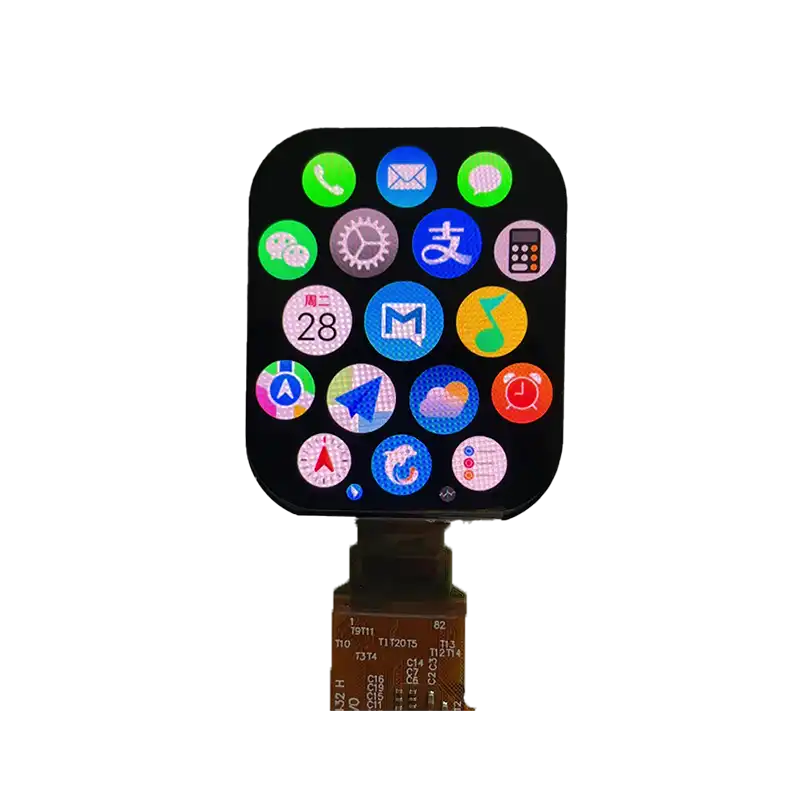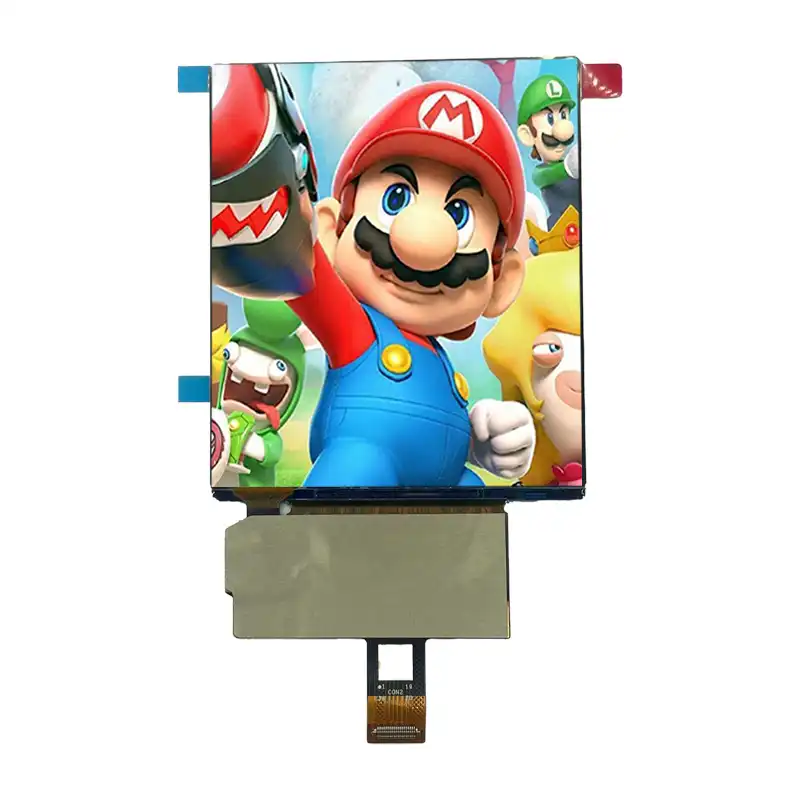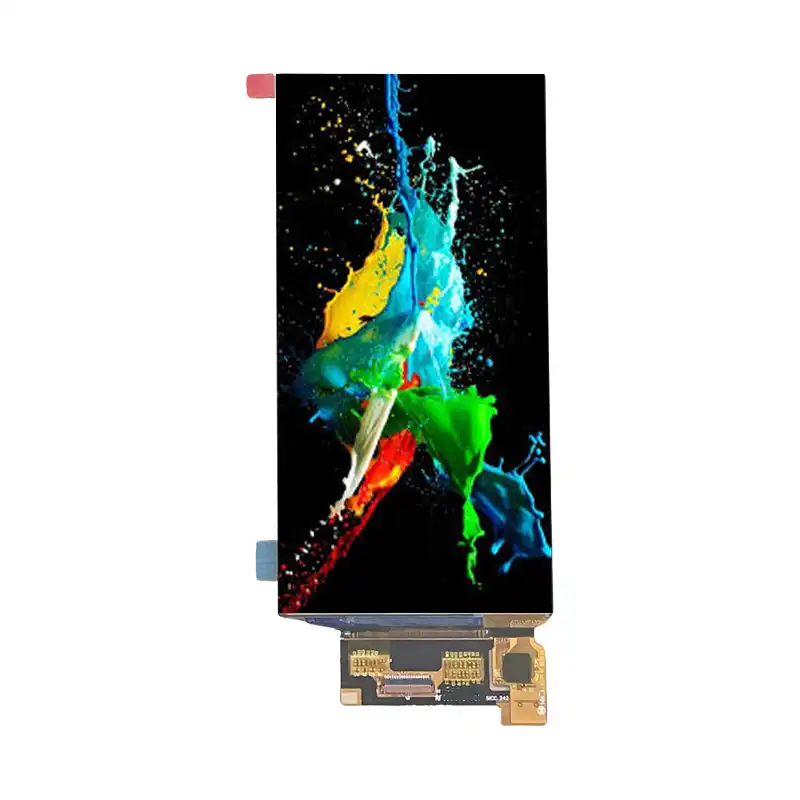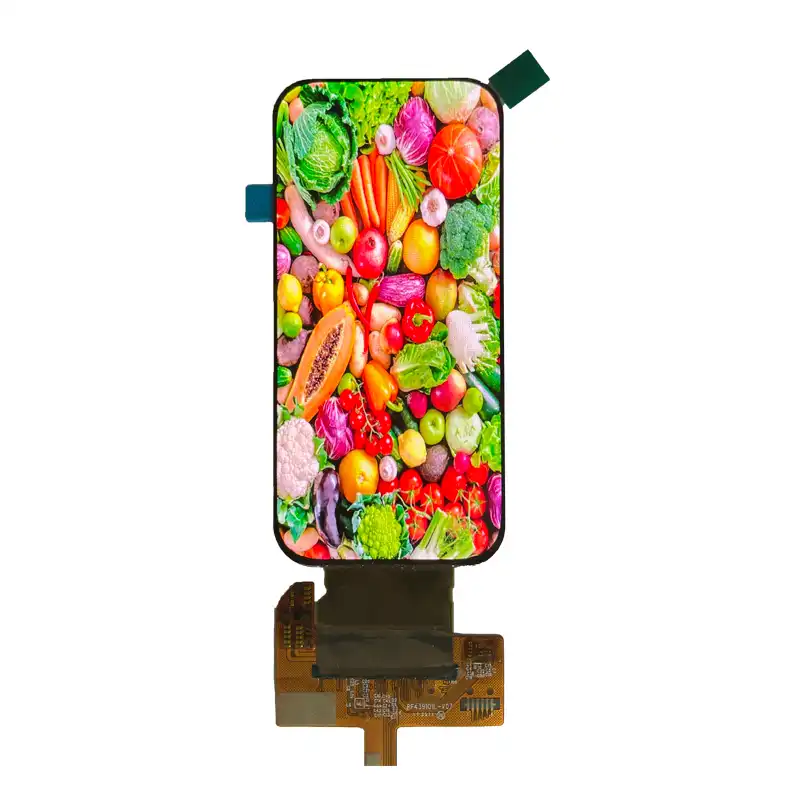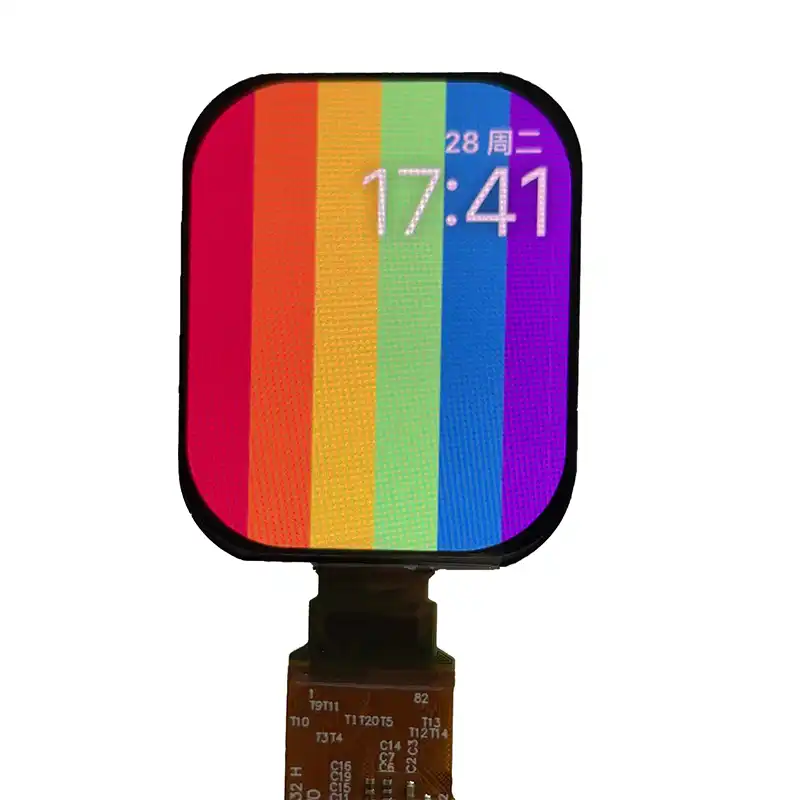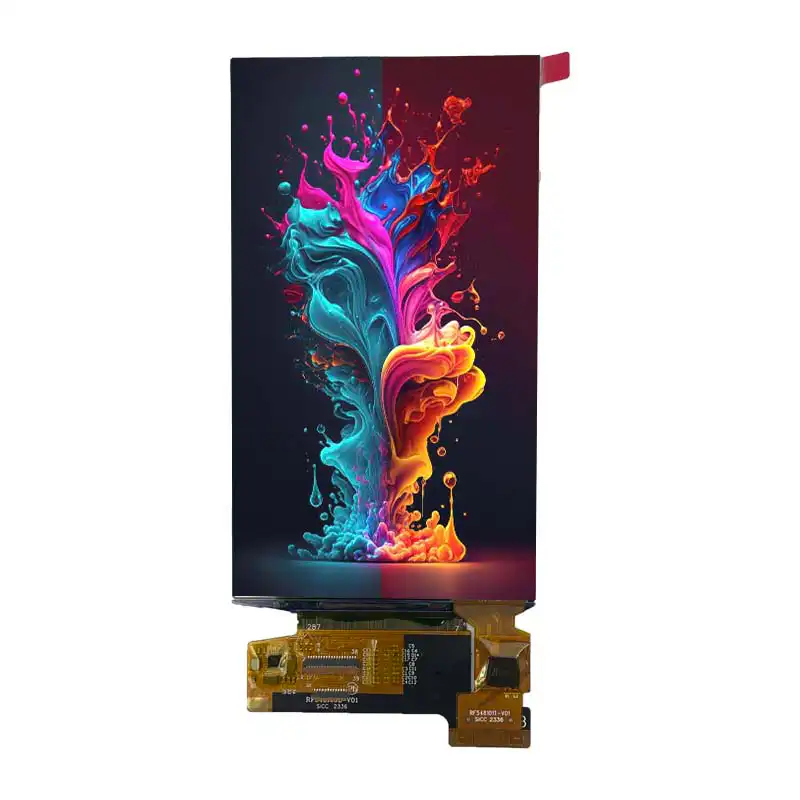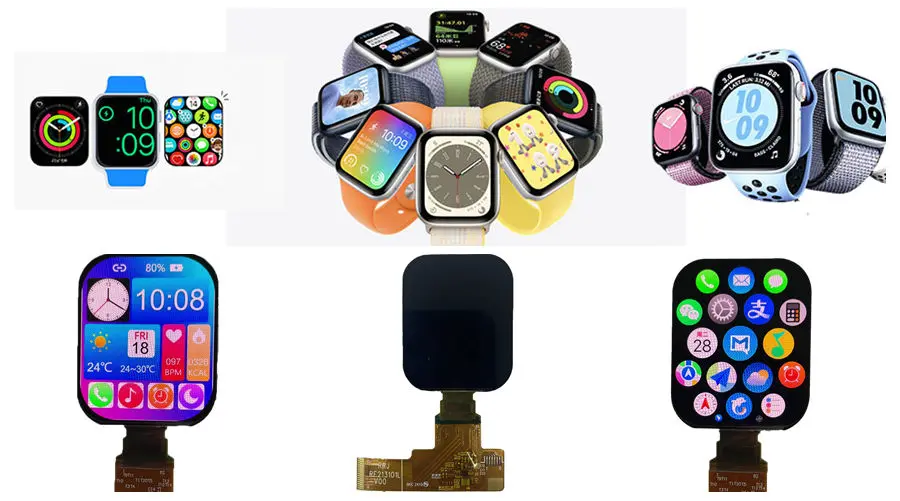
Table of Contents
1. Core Parameters of 2.06inch AMOLED Display Module
The 2.06inch AMOLED display module is engineered for high-performance applications requiring compact size, low power consumption, and exceptional visual quality. Below are its key specifications:
| Parameter | Value | Description |
| Display Size | 2.06 inch (Diagonal) | Measured diagonally across the active area |
| Resolution | 410 x 502 pixels | High pixel density for sharp visuals |
| Active Area | 33.087 mm (W) × 40.511 mm (H) | Physical dimensions of the display area |
| Module Outline | 34.787 mm (W) × 43.135 mm (H) × 0.8 mm (T) | Compact form factor for embedded systems |
| Color Depth | 16.7M (262K color levels) | True-to-life color reproduction |
| Interface Types | MIPI/QSPI/4-Wire SPI | Flexible connectivity options |
| Operating Temperature | -20°C ~ 70°C | Industrial-grade temperature range |
| Power Consumption | Standby: 0.68mW, Normal: 239.15mW, HBM: 443.9mW | Energy-efficient for battery-powered devices |
| Lifetime | 13 Months (Normal Operating Conditions) | Based on 25°C white screen mode |
2. Applications of 2.06inch AMOLED Module
2.1 Smart Wearables
The 2.06inch AMOLED module's compact design and low power consumption make it ideal for smartwatches and health monitors. For example, a leading brand integrated this module into its smartwatch, achieving a 40% increase in screen brightness and 15% longer battery life.
2.2 Industrial Control Terminals
With its industrial-grade temperature range (-20°C to 70°C) and high ESD resistance (±6kV), the module is widely used in PLCs and sensors. It passes 96-hour high-temperature, high-humidity tests and 10 thermal shock cycles (-20°C ↔ +70°C).
2.3 Consumer Electronics Accessories
From wireless earbuds to portable Bluetooth speakers, the module's MIPI/QSPI interface ensures seamless integration with main control chips. A case study shows a 30% improvement in user interaction efficiency after adoption.
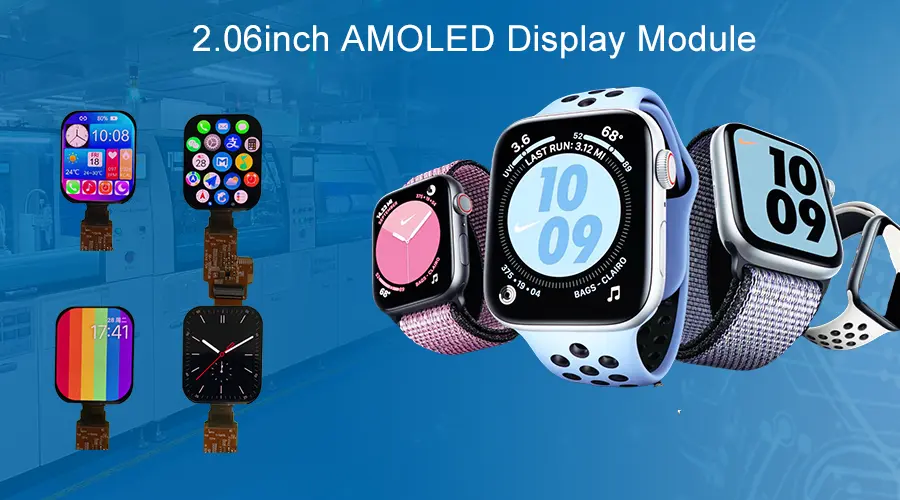
3. Technical Advantages
3.1 High Contrast and Wide Viewing Angles
With a contrast ratio of 60,000:1 and ±85° viewing angles, the module delivers consistent image quality from any perspective. This makes it suitable for outdoor applications where sunlight readability is critical.
3.2 Low Power Design
Standby mode consumes only 0.68mW, while high-brightness mode (HBM) uses 443.9mW. This low-power architecture is ideal for battery-operated IoT devices and wearables.
3.3 Color Accuracy
Covering 97% NTSC color gamut and supporting 16.7M colors, the module ensures vibrant and accurate color reproduction. The ΔE value is less than 2, meeting professional display standards.
4. Interface Design and Signal Definitions
The module supports three interface types: MIPI, QSPI, and 4-Wire SPI, offering flexibility for various system designs. Below is the signal definition table:
| Pin Number | Signal Name | Function Description |
| 1 | VCI | Main power supply for the display module |
| 2 | IOVCC | Power supply for I/O system |
| 3-4 | IM0/IM1 | Interface mode selection (MIPI/QSPI/SPI) |
| 5-33 | CLKP/CLKN/D0P/D0N | Differential signal pairs for high-speed data transmission |
| 34-39 | TP-IOVCC/TP-RST | Touch panel interface (I²C protocol) |
Design Recommendations:
Ensure differential signal pairs (e.g., CLKP/CLKN) have < 10Ω impedance and trace length difference ≤ 1mm.
Add 0.1μF ceramic capacitors near VCI and IOVDD pins to suppress high-frequency noise.
5. Optical Performance Specifications
The 2.06inch AMOLED module excels in optical performance, making it suitable for high-end applications. Below are the key optical metrics:
| Parameter | Condition | Min | Typ | Max | Unit | Note |
| Luminance (Bp) | White screen mode | 540 | 600 | - | nit | - |
| Contrast Ratio (CR) | 0° vieanglewing | 60,000:1 | - | - | - | - |
| Color Gamut (NTSC) | - | 97 | 100 | - | % | - |
| Lifetime (LT95) | 25°C white screen | 200 | - | - | hours | Normal mode |
6. Design Guidelines for System Integration
6.1 Mechanical Considerations
The module's thickness of 0.8mm requires careful PCB layout to avoid mechanical stress. Use a 0.2mm clearance around the module for thermal expansion.
6.2 Power Supply Recommendations
Use a 3.3V regulator with ±5% tolerance for VCI and IOVCC.
Decoupling capacitors (0.1μF ceramic) must be placed within 5mm of the power pins.
6.3 Thermal Management
In high-brightness modes, the module can reach 50°C. Ensure adequate airflow or use a heatsink if operating in enclosed environments.
7. Future Trends and Market Prospects
7.1 Foldable and Flexible Displays
With advancements in flexible AMOLED technology, the 2.06inch module is poised for expansion into foldable devices and AR glasses. Future iterations may reduce thickness to 0.5mm using flexible substrates (e.g., PI film).
7.2 Energy Efficiency and Eco-Friendly Design
Dynamic refresh rate adjustment and localized dimming can further reduce standby power to 0.5mW. The module also complies with RoHS standards by minimizing hazardous substances (e.g., lead, cadmium).
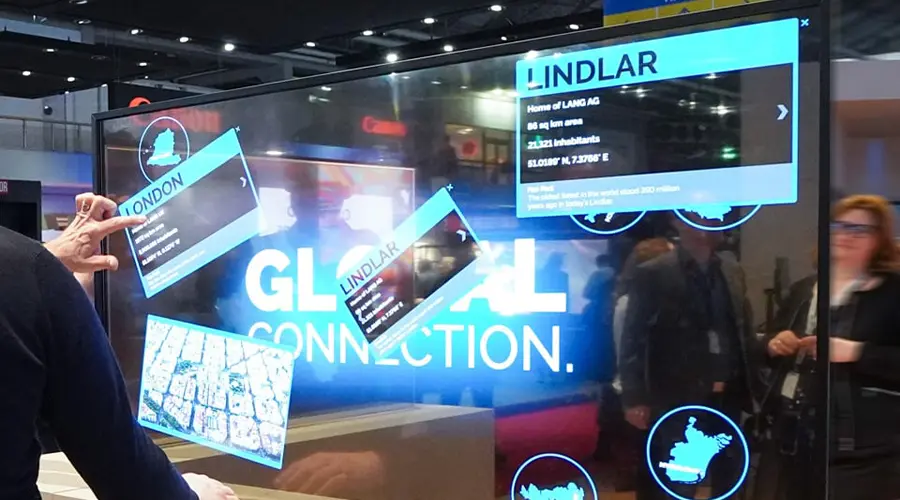
8. Case Study: Integration into Smart Health Monitor
A medical device company integrated the 2.06inch AMOLED module into its wearable health monitor. Key results included:
30% reduction in power consumption compared to previous LCD models
Improved user satisfaction due to vibrant color and wide viewing angles
Passing IP67 rating for water and dust resistance
Quote from Product Manager: "The AMOLED module's low power consumption and high brightness allowed us to double the battery life of our device while maintaining a sleek form factor."
9. Frequently Asked Questions
9.1 What is the maximum operating temperature?
The module can operate reliably up to 70°C, making it suitable for industrial environments.
9.2 Can it be used in outdoor applications?
Yes, with a peak brightness of 600 nit and wide viewing angles, it maintains readability under direct sunlight.
9.3 What is the expected lifespan?
Under normal operating conditions (25°C white screen), the module has a lifespan of 13 months.
9.4 Is touch functionality supported?
Yes, it includes a built-in capacitive touch controller with I²C interface support.
10. Contact Information
Shenzhen Brownopto Technlogy Co., Ltd.
Phone: +86 17748574559
Email: info@blhlcd.com
Website: www.blhlcd.com
Latest articles
-
Why 1–2" AMOLEDs Are Key to AR/XR in 2025
Why 1–2 Inch AMOLED Displays Are Becoming Essential in the AR/XR Boom (2025 Industry Insight)body {f
-
Understanding OLED Display Technology: Principles, Performance & Applications
OLED (Organic Light Emitting Diode) displays are a class of self-emissive display technology in whic
-
From Wearables to AR Glasses – How OLED Displays Are Redefining Visual Experiences in 2025
By 2025, OLED (Organic Light-Emitting Diode) technology has transitioned from luxury smartphone disp
-
Stretched Bar LCD Displays for Retail: Boost Sales & Engagement in Supermarkets
Discover how stretched bar LCD displays enhance supermarket shelf-edge marketing, drive sales, reduc
-
Stretched LCD Solutions for Restaurants and Hospitality Venues
Stretched LCDs offer sleek, high-brightness displays perfect for restaurant menus and hospitality si
Recommended products
-
2.06-inch OLED Display | 410×502 Resolution | 600 Nits | SPI Screen
The 2.06-inch AMOLED display module is designed specifically for harsh industrial environments, feat
-
3.92 INCH OLED Screen I2C Interface 1080 × 1240 Resolution
Product Specifications: BRO392001AResolution: 1080x1024Operating Voltage Range: 28VScreen Size: 3.92
-
6.01 INCH Display OLED screen | High Definition 1080x2160 | MIPI Interface
Product Specifications: BRO601001ADisplayMode: AMOLED Screen Size (inch): 6.01 Resolution: 1080x2
-
4.39 INCH OLED display module I2C Interface 568×1210 Resolution
The 4.39-inch AMOLED display module (model BR439102-A1) introduced by (Shenzhen Brownopto Technology
-
1.93 INCH OLED Panel I2C 368x448 Industrial-Grade Panel
Shenzhen Brownopto Technology’s 1.93-inch AMOLED module (Model BR193103-A1) features a core advantag
-
5.48 INCH AMOLED Display Module - 1080x1920 I2C, MIPI DSI, Industrial
Product Specifications: BRO548001AResolution: 1080x1920Operating Voltage Range: 2.8VScreen Size: 5.4

